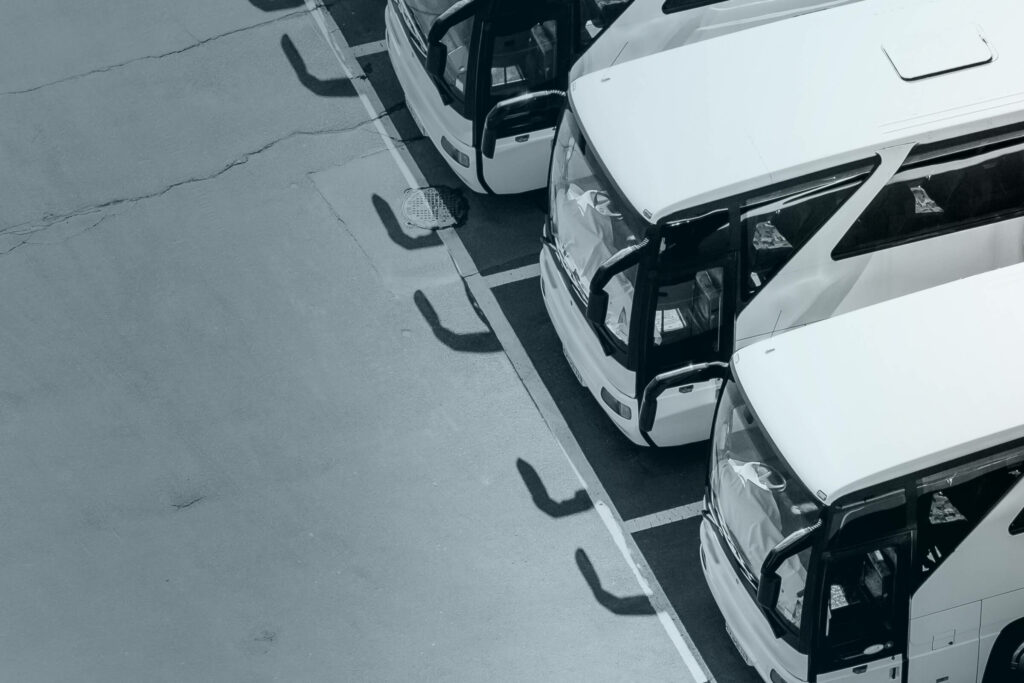Why Transit Hubs Need Indoor Navigation and How to Choose the Right RTLS Solution
In the high-pressure environment of transit yard operations, the need for efficiency, accuracy, and safety has never been more crucial. With the rise in urbanization and the growing demand for public transportation, bus, coach, rail, and tram depots play a pivotal role in ensuring seamless mobility for countless passengers. The intricacies of managing these dynamic yards now require advanced technological solutions that go beyond traditional methods. This is where Indoor Navigation and Real-Time Location Systems (RTLS) come into play.

The Importance of Indoor Navigation in Transit Yards
Gone are the days of manual tracking and guesswork within transit depots. Indoor Navigation has emerged as a game-changer, revolutionizing the way these hubs operate. This technology provides precise, real-time insights into the location and movements of vehicles, assets, and personnel within indoor spaces. With bus and coach depots often sprawling across large areas and complex layouts, Indoor Navigation eliminates inefficiencies, enhances resource allocation, and elevates safety protocols.
Imagine a scenario where depot or yard managers can monitor the exact position of every bus or coach in real time. This not only optimizes fleet management but also leads to better service predictability, reduced passenger wait times, and ultimately, increased customer satisfaction. Moreover, the ability to track assets and equipment within the depot ensures that maintenance schedules are streamlined, reducing downtime and minimizing operational disruptions.
Choosing the Right RTLS Solution
Selecting the ideal RTLS solution for a transit hub requires careful consideration of various factors. The following key features should guide your decision-making process:
- Accuracy: Precision is paramount in indoor navigation. Look for a solution that offers high location accuracy, allowing you to track assets within inches. This level of precision prevents errors in vehicle allocation and optimizes space utilization.
- Real-Time Updates: The solution should provide real-time updates without delays. This ensures that depot managers are working with the latest data, enabling swift decision-making and response to dynamic situations.
- Ease of Integration: A seamless integration with existing CAD/AVL, Scheduling and Dispatch systems and software is crucial. The chosen RTLS solution should effortlessly integrate with other operational tools, preventing disruptions to your current workflow.
- Scalability: Transit hubs are constantly evolving environments. Opt for an RTLS solution that can easily scale as your depot expands or undergoes changes, ensuring a long-lasting investment.
- Customization: Every depot has unique requirements. Choose an RTLS solution that can be tailored to match your specific operational needs, offering flexibility in tracking various assets and optimizing processes.
- Data Analytics: An advanced RTLS solution should offer robust data analytics Insights derived from tracking data can drive continuous improvements, enhance resource allocation, and lead to cost savings.
Ubisense’s SmartSpace® Solution: A Superior Choice
In the realm of Indoor Navigation and RTLS for transit yards, Ubisense’s SmartSpace stands out as a superior choice. Built on cutting-edge technology and years of expertise, SmartSpace addresses the complex challenges faced by transit depots, setting a new standard for efficiency and precision.
- Unmatched Accuracy: SmartSpace ensures unparalleled accuracy in tracking vehicles, assets, and personnel within indoor spaces. Its Dimension4 sensors and tags create a dynamic, invisible grid that offers real-time, inch-level, 3D location accuracy.
- Real-Time Insights: With SmartSpace, depot managers gain access to real-time insights, enabling informed decisions and rapid responses to changing conditions. The solution’s intuitive dashboards provide a comprehensive view of all operational aspects.
- Seamless Integration: SmartSpace seamlessly integrates with existing systems, making the transition to advanced indoor navigation effortless. Its compatibility with various software and tools ensures minimal disruption during implementation.
- Scalability and Customization: SmartSpace is designed to accommodate the evolving needs of transit hubs. Its scalability and customization options ensure that the solution can adapt as your depot grows and changes over time.
- Data-Driven Optimization: SmartSpace’s data analytics capabilities empower depot managers to analyze trends, identify bottlenecks, and make data-driven decisions. This leads to optimized resource allocation, reduced costs, and improved overall efficiency.
Conclusion
In the world of modern transit operations, bus, coach, and rail depots must embrace cutting-edge solutions to meet the demands of a dynamic environment. Indoor Navigation and RTLS have emerged as indispensable tools, redefining the way depots manage their fleets, assets, and personnel. When choosing the right RTLS solution, factors such as accuracy, real-time updates, integration, scalability, customization, and data analytics must be carefully evaluated.
Ubisense’s SmartSpace solution aligns seamlessly with the requirements of transit yards. Its unmatched accuracy, real-time insights, seamless integration, scalability, customization options, and data-driven optimization capabilities make it the ideal choice for revolutionizing depot operations. As the transit industry continues to evolve, SmartSpace ensures that depots stay at the forefront of innovation, delivering exceptional service, reducing costs, and enhancing passenger experiences. Embrace the future of transit hub management with Ubisense’s SmartSpace—a transformation that promises to reshape the way we navigate and operate within indoor spaces.
